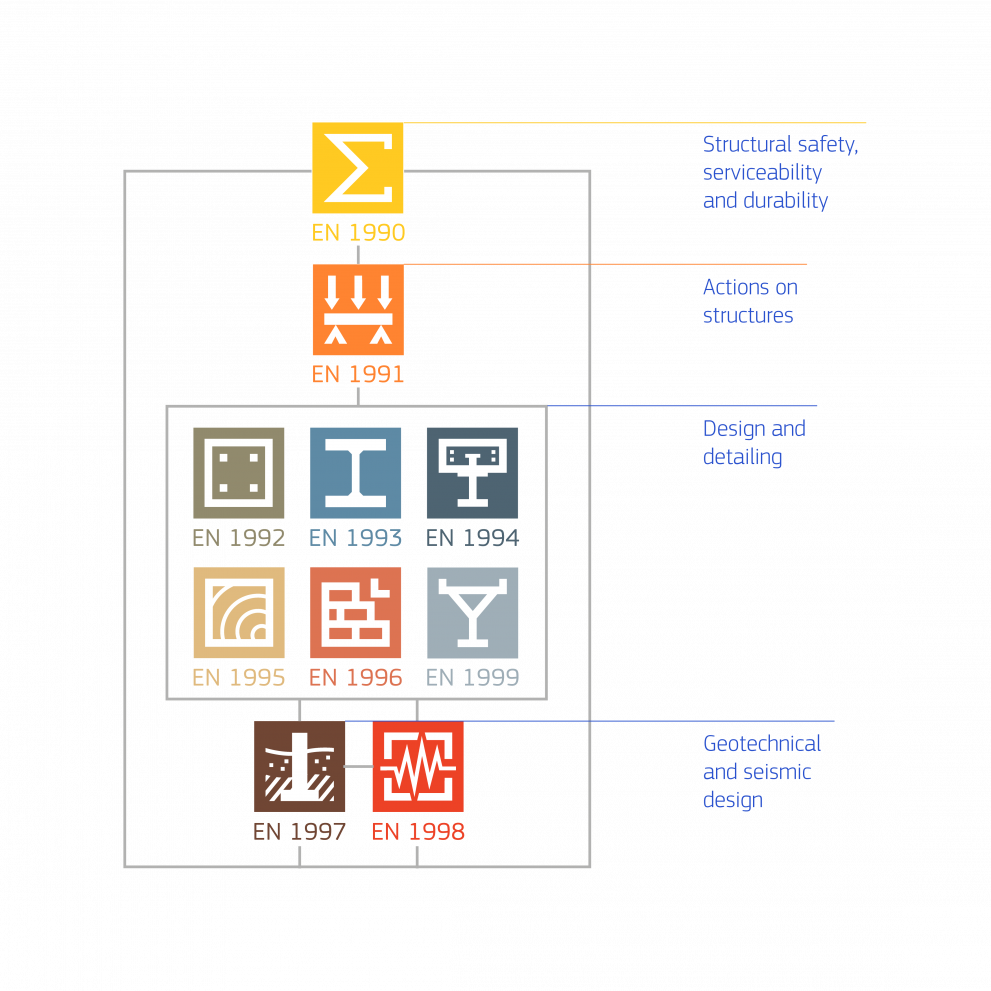The Eurocodes at a glance
The EN Eurocodes apply to the structural design of buildings and other civil engineering works including, geotechnical aspects, structural fire design and situations including earthquakes, execution and temporary structures. For the design of special construction works (e.g. nuclear installations, dams, etc) other provisions than those in the EN Eurocodes might be necessary.

Why the Eurocodes?
The Eurocodes help make European companies more competitive and increase safety in the construction industry. The Eurocodes are replacing national standards that provide common technical rules for the design of buildings and other civil engineering works and construction products. They are the recommended reference for technical specifications in public contracts.
The EN Eurocodes contribute to the establishment and functioning of the internal market for construction products and engineering services by eliminating the disparities that hinder their free circulation within the Community. They are the recommended reference for technical specifications in public contracts. Further, they are meant to lead to more uniform levels of safety in construction in Europe.
The EN Eurocodes are the reference design codes. After publication of the National Standard transposing the Eurocodes and the National Annexes, all conflicting standards shall be withdrawn. It is mandatory that the Member States accept designs to the EN Eurocodes.
The Eurocodes are currently at the stage of maintenance and evolution in order to address the variety of new methods, new materials, new regulatory requirements and new societal needs developing and to extend harmonisation.
Fields of application
The Eurocodes apply to:
- basis of structural design (EN 1990);
- actions on structures (EN 1991);
- the design of concrete (EN 1992), steel (EN 1993), composite steel and concrete (EN1994), timber (EN 1995), masonry (EN 1996) and aluminium (EN 1999) structures; together with
- geotechnical design (EN 1997); and
- the design, assessment and retrofitting of structures for earthquake resistance (EN 1998).
Benefits of use
European Standards are developed in support of European policies but their benefits, however, go far beyond that. The European Standards on construction:
- complete the internal market for construction products;
- create a transparent framework for competitiveness;
- make the free movement of engineering services a practical reality;
- transfer and disseminate technology;
- protect the health and safety of European citizens;
- provide added value by reducing output and sales cost.
In particular, the Eurocodes offer many benefits to the construction industry and their users, inclusing:
- EN Eurocodes help to harmonize the services market in the construction sector.
- EN Eurocodes encourage and facilitate the marketing and use of materials, structural components and kits.
- By instituting a common design framework, EN Eurocodes enhance and be a common basis for research and development in civil engineering.
- Greater transparency in design methods ease communication between designers, authorities and clients.
- Common design aids (manuals, handbooks, etc.) and software have been prepared and are used.
- EN Eurocodes contribute to increase the competitiveness of the European civil engineering firms, contractors, designers and product manufacturers in their worldwide activities.
- EN Eurocodes lead to a more uniform level of constructions safety in the different European regions.
Eurocodes history
Discover important moments in the history of the Eurocodes.
Major concepts
Visit the basic requirements and other major concepts concerning the Eurocodes.
Are the EN Eurocodes Mandatory?
Is it mandatory that Member States perform structural design according to the EN Eurocodes?
